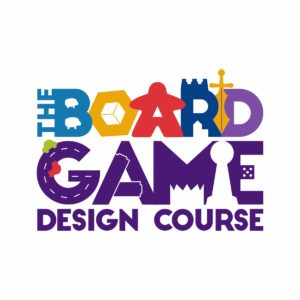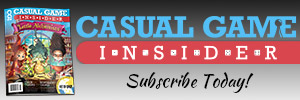
This week is the Board Game Design Virtual Summit 2020. This is a totally online summit on board game design and publishing and is hosted by Boardgamedesigncourse.com. All interviews are hosted by game designer Joe Slack. I listened to three of the interviews and found them very informative and really interesting about how to build a following for your board game.
You can join the Summit here.
On Day 2, there are three more interesting interviews about gaining a following with Gabe Barrett, Brandon Rollins, and Nalin Chuapetcharasopon.
Gabe Barrett
Gabe Barrett is the founder of the Board Game Design Lab, a podcast and community with the main goal of helping designers create great games that people love.
They discuss building community through his podcast to encourage each other as they design their games. In his community, designers would celebrate game design good news and encourage each other when members get a set back. He said it is about building trust.
When he started his podcast, he would email hundreds of people in the board game community to get guests onto his show. He would actually get a few replies from people like Jamey Stegmaier. He built his email list doing it this way. He said not to be afraid to get your name out there and build your following.
He said to keep at it and build a community of listeners and a Facebook community. One is better than zero. He is building and moderates a Facebook group called Board Game Design Lab which now has more than 6,000 followers.
On his Facebook group, he is constantly engaging the group with weekly questions to build engagement. He asks members how is their game design going.
He works hard to do a podcast every week consistently. Listeners can follow you better when you're consistent. It took him two years to build up his community with his podcasts. He listens to his listeners who will suggest subjects or guest they want to hear from. He is very open to all feedback from his community.
A word of advice to content creators who are starting a Kickstarter or starting a community or anything is to follow before they lead. Build relationships and engage people. Don't make it one sided where you just want to make money. Don't always talk about yourself or your project. Help people out when you can. Listen to other people and learn about them.
Gabe Barrett mentions he is going to do a Kickstarter for his Game Design Starter Kit! which helps designers design their board games and will be doing solo player board games.
Brandon Rollins
Brandon Rollins owns and runs Pangea Games. To help first-time game developers get started, he created brandonthegamedev.com and the Start to Finish: Publish and Sell Your First Board Game series.
He said a great way to start is to start a project and just posting it on many groups and getting it out there. You have to persevere and be consistent. After much work, people will start to notice you. It can be discouraging when no one plays your prototype, watch your videos, read your articles, but you just have to keep working and be consistent.
He said it takes a long time to get noticed and build momentum. He said to learn from your mistakes and just get better at your craft. When you have an idea, you need to put the work into and build a community during your process. An idea is nothing if you don't put the work into it.
Ways to get a community is to have published games, consistently blog posts or videos that interest people. Then build friendships in social media. He said he started with Twitter and Instagram, but there are more social media out there.
He said he has success with blogging. He writes articles about game design and people are engaged within articles. He said people can do videos as well.
He said he had many conversations with people with Instagram. He gets much engagement when he posts pictures of his games in development.
It would be a challenge to convert these followers into buyers. With his blog, he said you have to encourage them subscribe to your email newsletter and give free giveaways. You want to get them interested with your articles.
He said he follows a Marketing funnel: get people's attention, get their interest, make them want what you're selling, get them to take action.
An example, your blog gets ranked in the search engine which get's people attention. You write something that is useful. That is how you get their interest. You tell them about your community where they can communicate with like-minded people. That's how you make them want what you're selling. Then have a button to Join Now and that is how you get them to take action.
He said don't give users too many options. Just have one choice to engage with your audience.
He used Discord to gain followers by opening up different chat rooms. He would engage about people's different projects. Sent many personal messages and invited them to his group.
To be engaging, you need to offer what other people want. Your blog, video channel, or whatever needs to fill a need whether it's advice on game design, playthroughs, or what. And you need to be kind and collaborative.
Nalin Chuapetcharasopon
Nalin helps people bring products to market using Kickstarter and Indiegogo. Since 2015, she’s worked with entrepreneurs and creators to raise millions of dollars. As Founder of Crush Crowdfunding and Meeple Marketing, she offers no-BS strategies, marketing resources, and campaign tactics to get ideas launched and funded.
She mentions how everyone in the board gaming industry are very helpful and open when she first started in the industry. No one was secretive and gave her advice on how they started the Kickstarter campaigns or how they started a following.
Nalin says that finding the right audience for their board game design is a struggle. In Pre-marketing stage she asks her clients who is their audience for their game. Once they found the audience that would be interested in the game like fitness enthusiasts for a game that is fitness related, it opens doors for them to find their strategies to gain that audience.
She mentions many people who went ahead with a Kickstarter without really knowing what their audience was. The campaign failed to fund because they didn't attract an audience that would back the game. She would help them to pinpoint the exact audience and attract them long before they relaunch the Kickstarter.
Many ways to attract attention to their game. Some people like to be out front and do videos of themselves talking about the development of their games while there is others who want to be behind the scenes and attract attention through paid advertising on social media.
She would advise designers to figure out who their audience is and find how their audience get their information. They can then get their paid advertising or posts on front of them.
You need to spend the pre-launch period to get interest in your game to your intended audience. Get the word out through social media and game conventions and other avenues. Make sure to reach as much people in your intended audience as possible to discover your game before the launch to build anticipation.
And during your Kickstarter campaign, she said to keep up engagement to keep the campaign going. There is alot of interest at the start of your campaign and and near the end, but there is a lull during the middle. You still need to attract more potential backers and keep communicating with your backers. Keep backers updated and they will remember your campaign and may share your campaign with other people. Remind people who show interest but haven't backed yet about your campaign.
This was only some of the points in the interview that I felt were very important. They talked about much more. Stay tuned for when I blog about Board Game Design Virtual Summit 2020: Day 3 - Finding Success on Kickstarter... and Beyond.


